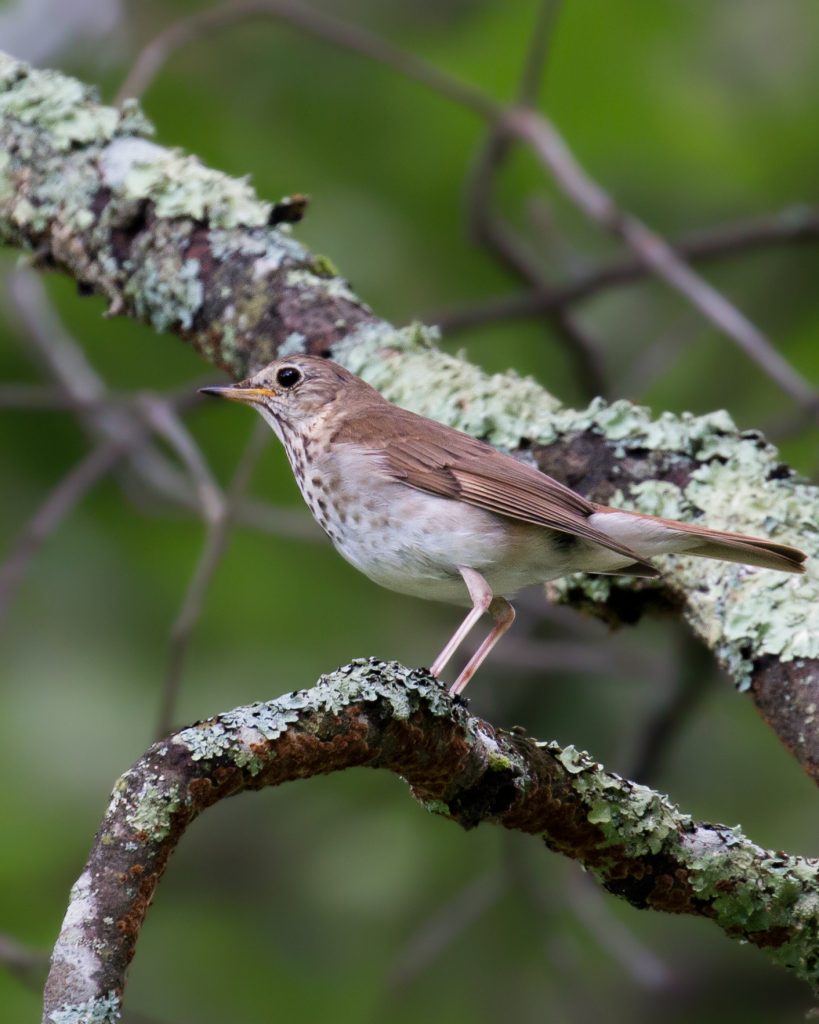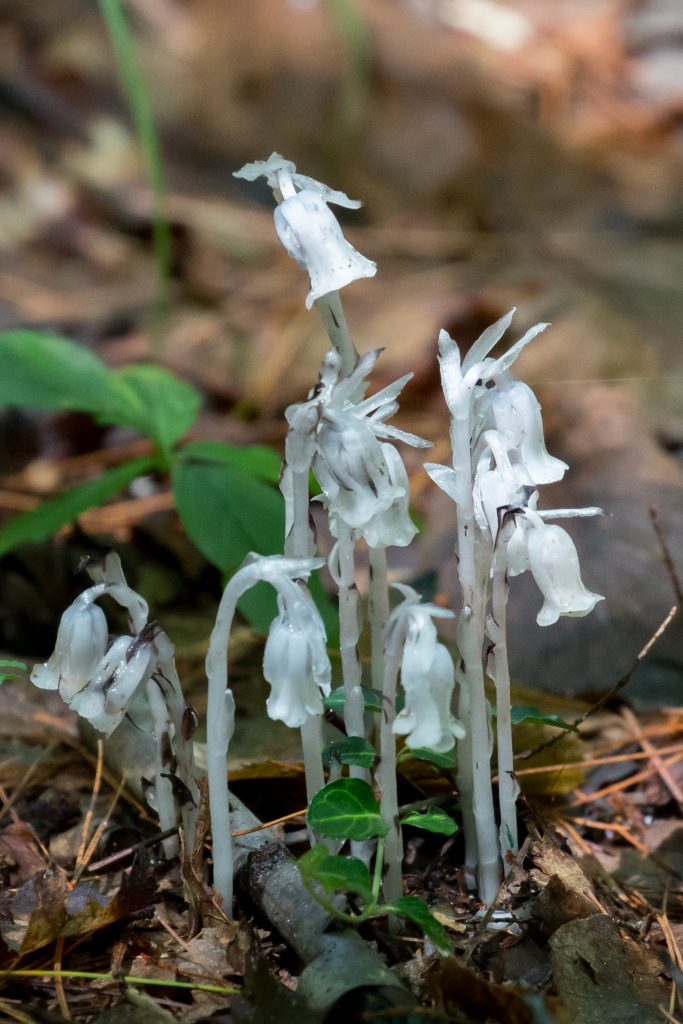
I wasn’t sure where I wanted to bird this morning, so I consulted John Haas‘ book ‘A Birding Guide to Sullivan County New York’, and decided to head out to Hickok Brook Multiple Use Area. John mentioned in his write up that Hickok Brook is good for breeding warblers, and more importantly, that Ruffed Grouse could be found in the area. I did okay with warblers, getting nine species: Ovenbird, Black-and-white, Common Yellowthroat, Hooded, Chestnut-sided, Blackburnian, Black-throated Blue, Pine, and Black-throated Green. I had one bird calling that I couldn’t identify; I’m wondering if it wasn’t a Nashville. The best part came a little bit later in my walk. It was closing in on noon, and many of the birds had quieted down as I walked back to my car. Suddenly, from the ferns on the side of the trail, not 10 feet from me, a RUFFED GROUSE popped straight up and flew at high speed into the woods, never getting more than ten feet off the ground. It scared the heck out of me! And while I was happy to get the bird, it was a less than satisfactory experience. Let’s just say Ruffed Grouse remains on my nemesis list.
RANDOM TANGENT: I feel like my birding by ear is worse this year than last year. It could be that last year I spent all of my time in Orange County and I had learned most of the birds that I would hear. This year, I feel like I’m struggling. I noticed it for sure when Kyle and I went to the Adirondacks, and again in recent weeks when I’ve been birding in Sullivan County. There are some birds that I just don’t know by ear, but also I find myself getting a little lost from time to time and struggling with some of the birds I thought I knew. One of these days I am going to write a post about what makes a good birder, and birding by ear is certainly high on the list.
SHOREBIRD REPORT: I have been checking Citgo pond regularly and so far I’ve had low numbers of Least Sandpipers and just a couple of Lesser Yellowlegs. Conditions are good at the pond, so I remain optimistic.




Hi Matt
It’s called Indian Pipe, I love birding Hickok Brook. A few years ago I took a gentleman from the city here and we got a Ruffed Grouse with 2 chicks. It is still my only sighting of grouse with young!
Scotty
That must have been amazing, Scotty! I’m going to get that bird one of these days… Thanks for the help with the Indian Pipe. Matt
It looks like a plant called Indian Pipe to me.
That’s two for Indian Pipe. Thanks Loren! Matt
Glad you got a grouse Matt, even though it could have been more satisfying. One of these days one will sit still for you! I can’t wait to hear about it!
I was glad to get it too, John. I think I have to spend more time in Sullivan County to get one… Matt
Indian Pipe is the name for this plant. The plant can be white or pink and later becomes blackish in color as it fades out. It is found deep in the woods.
Great post, Matt
Glad you had a good walk in my county.
Wilma
Your unknown plant is an Indian Pipe, also known as a Ghost Plant or Corpse Plant. They are unable to make chlorophyll, are parasitic, and are uncommon. It’s always a thrill for me to stumble upon one.
Sounds like you had a wonderful day. How exciting to see a Ruffed Grouse! I feel your pain about bird song. Just when you think you have it down, they throw in a variation to stump you!
Love the photos as always.
I love the nicknames for Indian Pipe, Kathy, especially Corpse Plant – it certainly fits! Oh, and thanks for commiserating with me, it’s good to know I’ve got company when it comes to my birding by ear struggles. Matt
Beautiful photos, I saw that plant yesterday at High Pt yesterday and wondered what it was, lo and behold I found the answer here! I think an exceptional memory helps to be a birder, I don’t have one but that doesn’t keep me from enjoying seeing and hearing them. Mary
Funny coincidence about the Indian Pipe, Mary. And who knew you would find the answer on a birding blog? I agree with you about having an exceptional memory being helpful – unfortunately my lack of memory is one of my biggest shortcomings, but, as you know, it hasn’t slowed me down either. Matt
Matt, I share your difficulties with birding by ear, but I feel like I’ve made some progress in the last year or two (after about 30 yrs of birding). One suggestion is Cornell Lab of Ornithology’s “All about Birds” site. I find it very helpful, for example, to run down the list of warblers and listen to each song as a reminder (only takes a few minutes).
Thanks for the suggestion Gilbert, I will give it a try to use the All About Birds website for this and then give some feedback on it. It’s refreshing to hear that you made progress this way after 30 years of birding; maybe I won’t have to wait that long now… Matt
Just to pile on about the Ghost Plant: I too saw it recently – last weekend @ Buttercup West in Stanfordville – and thought it was a fungus. Then I stumbled on to the image above. Thanks for the 411 all!
Interesting that there have been several coincidences surrounding the “Ghost Plant”, and to think I almost didn’t include it in the post. Matt